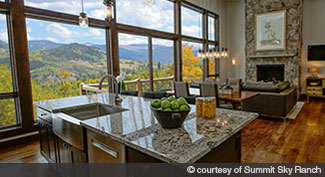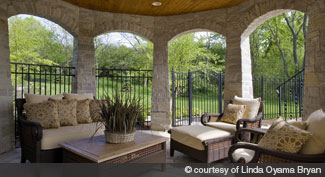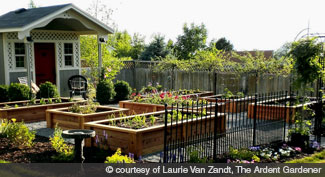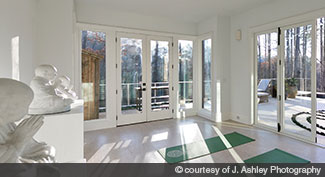More and more consumers are looking for ways their homes can improve their physical and mental well-being. And an increasing number of developers are focusing their projects around this concept, hoping their wide variety of health-focused amenities will be a winning combination to attract buyers’ attention.
One early example that keeps evolving is Serenbe, a 1,200-acre, 13-year-old community outside Atlanta. “The developer drives many of the sustainable aspects of homes in the Serenbe community, which make houses and our lifestyles healthy,” says Monica Olsen, vice president of marketing and communications for the development. She cites the project’s geothermal heating and cooling, solar-ready homes, access to nature, and edible landscaping as features that help their homes stand out. “These healthy home choices, along with our setting in nature with miles of trails right outside home owners’ doors, add to the increased buyer draw.”
The trend is evident across the country. When The New Home Company in Roseville, Calif., began planning its 100-acre Cannery housing development in Davis, it hoped to offer a safe place for many—including some of the city’s aging population—to live, says Kevin Carson, the company’s Northern California president. They designed the 547 houses on the site of a former tomato packing plant with solar power systems and wider hallways. The common areas include covered outdoor spaces, designated spots to store bicycles, and a 7.5-acre farm operated by a nonprofit teaching organization.
But not every homeowner can live in a development specially designed to boost healthfulness. The key, according to David Wolf—the Chicago-based president of ON Collaborative, the development, marketing, and sales division of Coldwell Banker—is for agents and brokers to help their clients learn more about the “ingredients” that go into their homes, just as consumers increasingly ask what’s in their food. Here are some of the major trends to look for in this niche.
Biophilic Design

But not every homeowner need claim the Rockies for a backyard. In fact, a study published recently in the International Journal of Environmental Research and

Better Air and Water Quality
For years, builders have focused on fashioning tighter building envelopes to make homes easier to keep warm or cool. Unfortunately, some designs became so tight that they eliminated fresh air, which resulted in mold growth and indoor air pollution caused by off-gassing home products. Ben Skoog, an independent construction consultant in Nashville, advises homeowners to carefully research all products and furnishings they bring into a house, since it’s not just paints, sealants, wood flooring, and carpeting that give off harmful and unpleasant fumes. “Some plug-in air fresheners pose a risk with synthetic ingredients, as can old barn wood repurposed for decorative interior wall coverings, even though it seemed green initially. Who knows what that wood was exposed to and absorbed over time?” Skoog notes. “When home owners make significant changes to their homes, it can impact the original design of the home systems and potentially compromise their integrity.”
To mitigate these issues, Skoog recommends air purification systems be built into new homes or retrofitted to existing ones. While such systems can cost anywhere from $5,000 to $15,000, depending on the system’s size and complexity, the peace of mind they provide is important, especially for young families, older home owners, or those with compromised respiratory systems.
In addition to concerns over air quality, the sad situation in Flint, Mich., taught homeowners across the country that they can’t take water safety for granted either. Those looking to better understand a particular property’s risks may wish to consult testing kits. Live Pure Inc. is one of many companies that offers such products; its all-in-one water and air assessment kit will run consumers around $800, with a separate mold and allergens kit coming in around $450. Its comprehensive drinking water quality test runs around $250. Homeowners can also choose to hire one of the growing number of home health inspectors.
Food Sources Closer to Home

Of course, not all homes or climates can support such edible infrastructure. For those with less space, Pickell suggests adding greenhouse-style windows and hanging terrariums. Matthew Rosenberg, acting design principle and owner at M-Rad Architecture + Design in Los Angeles, says he’s seeing a new design twist growing in popularity: growing troughs dropped into kitchen countertops. And for those without a green thumb, consider gathering a list of nearby farmers markets, community-supported agriculture options, and food co-ops that offer local produce to help market your listings to locavores.
Improved Artificial Light
It’s not just plants that crave light, and most real estate pros are well-versed in the many ways to maximize sunshine in a listing. But for spaces that just don’t have great light, new options are coming onto the market and coming down in price. Lightbulbs that change temperature and brightness can complement residents’ circadian rhythms and help improve their mood. These new bulbs are not the same thing as LEDs with dimmers, which change a bulb’s light intensity but don’t change the actual temperature. These new options also can be programmed to change automatically throughout the day. “In the morning, a homeowner may want the light brighter and cooler, and in the evening less bright and warmer. All this is measured in terms of the bulb’s Kelvin temperature,” says architect Robert Fornataro, senior associate with SWBR in Rochester, N.Y. Up until recently, these lights have been used mostly in commercial settings due to their high costs. However, Fornataro expects to see them more often in residential applications as demand increases and prices drop. Some examples in the consumer realm already include GE’s C Sleep and Phillips’ Hue White Ambiance.
Emerging “Me” Spaces

Architectural designer Eric Rothman says at least one-third of the projects in the works at the eponymous firm he runs alongside his wife Jenny in Atlanta includes “some sort of small meditation or prayer room—typically 10 feet by 10 feet.” While most such rooms eschew televisions and focus instead on windows to help clients connect with nature, that’s not always the case. One client requested a space where screens are essential. “He wanted the space underground and soundproofed so he could play his computer games away from everyone,” Rothman says. “Everybody has a different interpretation of what they need” in their “me” space.




